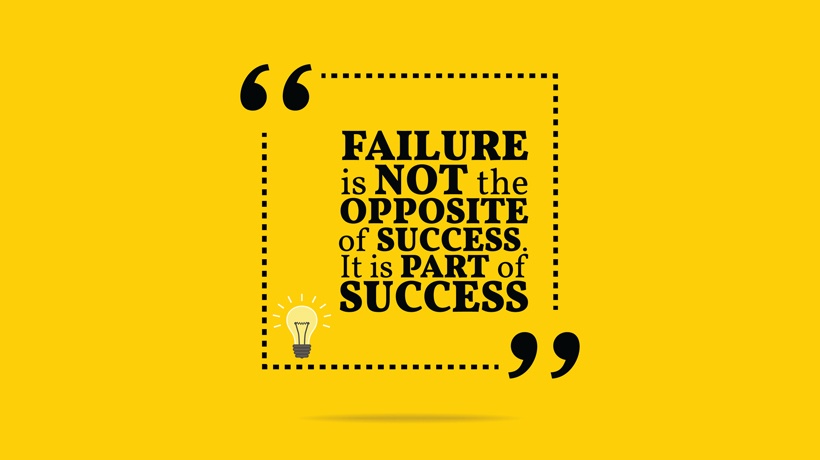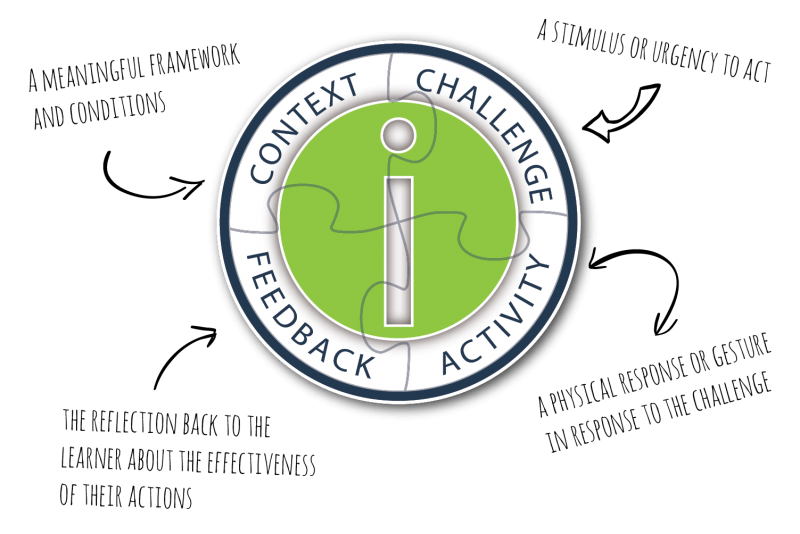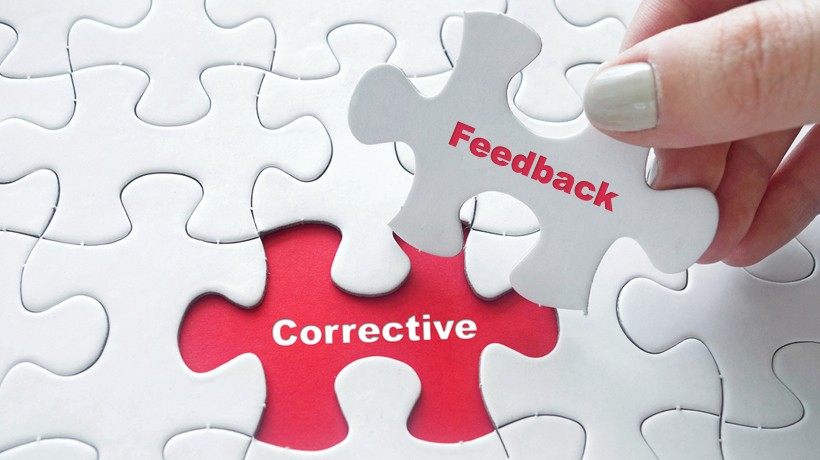Failure And The Corrective Feedback Paradigm In Online Learning
Failure: The state or condition of not meeting a desirable or intended objective, and may be viewed as the opposite of success.
Failure can be a tough pill to swallow. As much as any of us despise or shudder at failed moments in life –whether they are personal or professional–, I think we would all agree that when we fail at something, or make a mistake or a poor decision that leads to negative outcomes, is when we really learn the most. Failure proves to be the most impactful to our future behavior and decisions in life.
When we fail, we learn.
I have two sons who are both blossoming before my very eyes. My six-year old is shier and more reserved and is sometimes hesitant to try new things, especially when the first attempt results in failure. It hurts and it’s scary the first time you fall off your bike when you’re learning to ride it, free of those reassuring and stabilizing training wheels! Yet, those moments, even though they are tear-filled and followed up by Band-Aids®, hugs, and tissues, are when learning is so powerful. Once the initial sting of defeat has subsided, the challenge is still sitting there in front of him to conquer, believe in himself, and gain the skill or whatever it is enough to surge forward and win! And if that challenge is Meaningful, Memorable, and Motivational to him, the skill or knowledge that he learned from the event will be retained and used.
Switching gears, pun intended, how can failure be a teaching moment in the online learning world?
You may be familiar with Allen Interactions’ CCAF Design Model, created by Michael Allen, for creating instructional interactivity in eLearning that is engaging and interactive and that can provide a Meaningful, Memorable, and Motivational experience for learners if applied appropriately to the performance opportunity at hand.
CCAF consists of 4 elements:
- Context: A meaningful framework and conditions.
- Challenge: A stimulus or urgency to act.
- Activity: A physical response or gesture in response to the challenge.
- Feedback: The reflection back to the learner about the effectiveness of their actions.
It is through the lens of a fitting Context, Challenge, Activity, and Feedback that learners, in a safe environment, can practice a skill or learn about a new product, fail and make mistakes, try again, and grow from the risks they take, the failed decisions that result, through practice. To learn more about the CCAF model and how to use instructional interactivity to improve e-learning design, get the eBook.
Practice Makes Perfect! The Corrective Feedback Paradigm (CFP)
Michael Allen discusses the extremely powerful and effective drill-and-practice approach called the corrective feedback paradigm (CFP) in Michael Allen’s Guide to eLearning:
“This approach sets an effective pattern for rehearsal of failed problems. When the learner fails to complete a problem correctly, it is presented again after one or two other problems are worked. If the learner succeeds, the problem will be presented again a bit later, perhaps after four to six other problems. The technique works to keep learners reworking problem areas until their performance reliability strengthens. Rehearsal is then gradually distributed more broadly over time until problems no longer need practice.” (Page 291).
Two Examples Of Corrective Feedback Paradigm (CFP)
1. Sight Words Ninja – The Endless Slicing Game.
Back to my six-year-old son. In addition to conquering bike riding, he’s been learning so much in Kindergarten this year. It blows me away! All I remember from Kindergarten is being selected to wake up all of my classmates from their naps. Kids don’t take naps in Kindergarten anymore – no time for that! They are learning to write, read, do basic math, etc.
Sight words are a big part in learning to read for children. These sight words are common words children are encouraged to memorize so they can instantly recognize these words when learning to read, without the need to use any means to decode them.
So for my son, I look for ways to make learning these sight words fun and engaging. What better way to do that than with the Holy Grail – the iPad®! I found a game called Sight Words Ninja that uses the corrective feedback paradigm in a fun drill-and-practice where you, the learner, are the ninja and use your finger as a sword. Several words fly out into the sky and the narrator says the word that you need to slice with your sword. When my son would slice an incorrect word, that word would be presented to him again rather quickly afterward. It’s a fun way for him to practice, practice, practice and finally conquer!
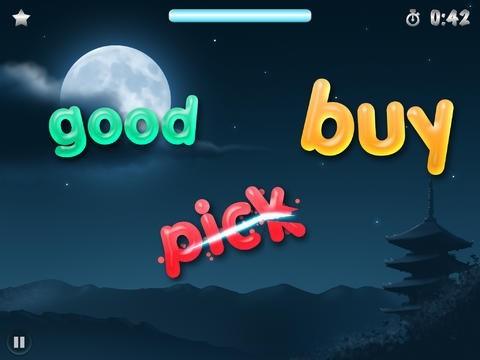
iPad® App: Sight Words Ninja
2. Feature Vs. Benefit Product Knowledge Drill-And-Practice – HD Supply.
This second example involved custom learning solutions provider, Allen Interactions, partnering with HD Supply, one of the largest industrial distributors in North America. HD Supply provides a broad range of products and value-add services to approximately 500,000 customers with leadership positions in maintenance, repair and operations, infrastructure and power, and specialty construction sectors.
One of the challenges HD Supply faced was that their sales staff lacked the ability to differentiate between the features and benefits of products and the ability to introduce these products into a consultative conversation with a customer. Allen Interactions created an online learning sales course for New Hires focused around three areas of interactive practice, one of them being feature vs. benefit product knowledge. Using the corrective feedback paradigm (CFP), an effective drill-and-practice approach that sets an effective pattern for the rehearsal of failed problems, New Hires:
- Become familiar with the top 5-6 products in their vertical.
- Learn to differentiate between features and benefits of those products to the customer versus benefits to HD Supply.
Learners are shown images of top-selling HD Supply catalog products along with nine attributes of each product. The salesperson/learner’s task is to sort the attributes into the displayed categories of Features, Benefits to the Customer, and Benefits to HD Supply, appropriately.

*Screen cap from HD Supply "Lessons for Sales Success" created by Allen Interactions
In this example, the learner did not place the product’s attributes into the proper categories, so this product will be served up to the learner again to tackle when the next few items are displayed.
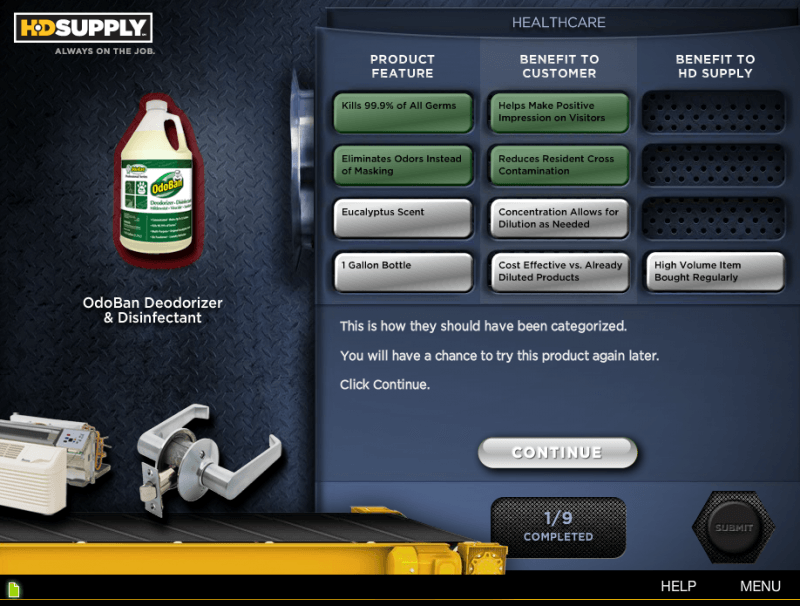
*Screen cap from HD Supply "Lessons for Sales Success" created by Allen Interactions
In this example, the learner did not place the attributes into the proper categories. The learner is now able to see the correct attributes for each category and will receive this product for practice again.
Check out the HD Supply Sales Training Case Study here.
In closing, I collected some very powerful and inspirational quotes on taking risk, making mistakes, and failing from very well-known and revered figures in our history. I hope this walk down Failure Lane and the power of making mistakes and practice are helpful to your future endeavors in creating learning that is meaningful to your learners and can bring them retained new skills and improved performance!
“Mistakes – call them unexpected learning experiences.” – Richard Bach
“Only those who dare to fail greatly can ever achieve greatly.” – Robert Kennedy
“Our greatest weakness lies in giving up. The most certain way to succeed is always to try just one more time.” – Thomas Edison
“An essential aspect of creativity is not being afraid to fail.” – Edwin Land
“You don’t learn by following rules. You learn by doing, and by falling over.” – Richard Branson
